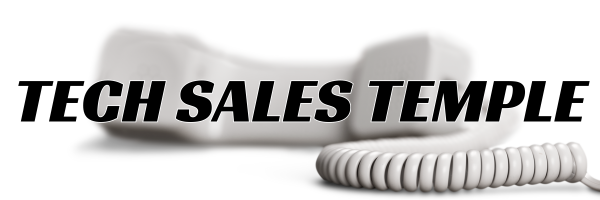Demystifying Sales-Led Growth (SLG): When and How to Use It

Sales-Led Growth (SLG) has become a buzzword in SaaS, but what does it really mean—and, more importantly, when does it make sense to adopt this strategy? If you’re a sales professional or a startup founder trying to select the best go-to-market (GTM) strategy for your product, understanding SLG is crucial.
This blog post will explain what Sales-Led Growth is, the types of products and businesses it best serves, and when a hybrid approach—blending SLG with Product-Led Growth (PLG)—might be the winning combination for your business.
What Is Sales-Led Growth (SLG)?
At its core, Sales-Led Growth is a go-to-market strategy that focuses on driving revenue and growth by leveraging a high-touch sales team. Unlike PLG, where the product largely “sells itself” through free trials or freemium models, SLG relies on skilled sales professionals to guide potential customers through more complex buying journeys. This approach places the sales team at the front and center, making them the primary engine for business growth.
The SLG model is often associated with enterprise software and service-oriented solutions, where products are too complex, expensive, or niche to sell through a purely self-service model. Sales reps in this framework focus on deep consultation, customization, and relationship-building to close deals.
Key Elements of the SLG Framework:
- High-Touch Sales Process: Personal interactions play a critical role in moving prospects through the pipeline.
- Focus on Big Deals: Enterprise-level customers with significant annual spending (often $10,000 or more per deal) justify the investment in dedicated sales teams.
- Consultation and Customization: Sales professionals work closely with prospects, addressing their unique challenges and customizing the solution to meet specific needs.
SLG vs. PLG
To better understand SLG, it’s helpful to contrast it with PLG. While PLG encourages users to adopt a product through free trials and self-exploration, SLG intentionally prioritizes personal engagement. Think of PLG as Amazon’s self-checkout, while SLG is more like meeting with a luxury car consultant before committing to a high-end purchase.
When Does Sales-Led Growth Make Sense?
Not every business needs to — or should — embrace a purely Sales-Led approach. SLG works best when the product or service requires significant buyer education, complex consultations, or hands-on implementation. Here are some specific scenarios where SLG shines.
1. When the Product is Consulting-Heavy
If your product is complex to understand or requires a significant amount of technical knowledge, a consultative approach is essential. High-touch engagements allow sales reps to guide your prospects through the intricacies of the product, ensuring that their unique needs are addressed.
For example, enterprise software like Salesforce or SAP requires heavy customization and onboarding. Marketing automation tools, data analytics platforms, or software used in regulated industries often need in-depth discussions about client-specific use cases.
2. When the Product Category is Brand New
When you’re introducing a product that creates or disrupts a category (a typical case for startups), prospects often lack the context to “self-serve.” Rather than requiring them to figure out the problem the product solves on their own, SLG helps educate prospects, creating demand and generating buy-in.
Example Case: A company launching AI-powered negotiation software. Customers may not yet understand how automation could optimize their procurement process. A consultative engagement educates potential customers and emphasizes the ROI of adopting a solution in this new category.
3. When the Product is Implementation-Heavy
Certain software and tools require significant time, effort, and technical resources to deploy successfully. When onboarding and integration are necessary components of delivering value, SLG ensures that customers have the ongoing support they need.
Example Case: Cloud data warehousing platforms like Snowflake, which require collaboration with internal IT teams for seamless implementation.
4. When Targeting Enterprise Customers
Enterprise clients often have multi-layered buying processes, procurement policies, and committees overseeing each purchase. Winning these big-ticket customers necessitates tailored presentations, in-depth demos, and incremental trust-building, which only a sales team can provide.
Rule of Thumb : SLG is advisable for companies with average deal sizes exceeding $10,000. Anything smaller might struggle to justify the cost of a dedicated sales team.
Why Enterprise-Level Spending Matters
The SLG model incurs higher costs, including salaries, commissions, and resources for an advanced sales stack (CRMs, automation, and analytics tools). To sustain this investment, your customers need to provide a sufficient lifetime value (LTV). Large enterprises or organizations with budgets for annual contracts offer dependable returns for your SLG efforts.
Bridging SLG & PLG: When Does a Hybrid Model Work?
In the world of go-to-market strategies, it’s not always black and white. Sometimes, combining Sales-Led Growth and Product-Led Growth makes sense. This hybrid strategy offers the best of both worlds for businesses that cater to varying customer types or want to scale efficiently.
How a Hybrid SLG/PLG Strategy Works
- The Product Does the Talking First:
For simpler use cases or smaller customer segments, allow your product to lead the charge with trials, freemium plans, or limited service tiers. This builds confidence and enables customers to experience value on their own terms.
- Sales Steps in for Higher-Ticket Deals:
Once prospects require customizations, deeper integrations, or enterprise-level features, your sales team engages them in high-touch interactions to seal the deal.
When to Use a Hybrid Approach
- Complex Products with a Self-Service Core
If your product offers a balance between complexity and accessibility, delivering a self-service onboarding experience with the option to escalate to sales assistance can capture a wider audience.
- Reducing Customer Acquisition Costs (CAC)
PLG strategies tend to have lower acquisition costs upfront, enabling businesses to scale. Sales engagement can then be reserved for revenue-driving or high LTV customers, optimizing CAC/LTV ratios.
- Upselling Opportunities
A PLG strategy builds initial trust and buy-in from smaller clients, making them more open to upgrading to enterprise tiers through the intervention of your sales team. For example, Slack successfully used a hybrid approach by acquiring smaller teams via their free plan and then reaching out to close enterprise-wide rollouts with sales support.
The Advantages of Sales-Led Growth
- Tailored Problem-Solving
Sales reps can provide highly personalized solutions, which builds trust and long-term loyalty.
- Higher Deal Sizes
Enterprise customers with complex requirements typically yield larger contracts, offering higher revenue per client.
- Stronger Relationships
Customer relationships established through deeper conversations are less likely to churn compared to lower-touch approaches.
Final Thoughts: Choosing the Right Growth Strategy for Your Business
Sales-Led Growth isn’t for everyone, but in the right circumstances, it’s a powerful way to unlock growth for complex, high-value products, particularly in the enterprise space. When deploying SLG, remember to evaluate your product’s complexity, target customers’ spending levels, and your team’s ability to provide high-touch engagement sustainably.
For many businesses, a hybrid model combining the scalability of PLG with the high-touch benefits of SLG offers the best solution. The key is finding the perfect balance that allows your team to serve diverse customer needs effectively.
Need support implementing a Sales-Led or hybrid go-to-market strategy? Explore our free community forum, to discuss your questions with other professionals!
